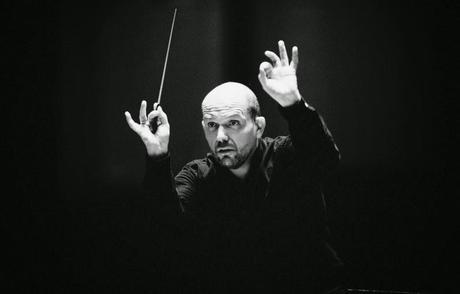by Paul J. Pelkonen

Conductor Jaap van Zweden returned to the New York Philharmonic.
Photo © 2014 The Dallas Symphony Orchestra
For the Mozart, Mr. van Zweden was joined by this year's acting concertmaster Sheryl Staples, and first chair viola Cynthia Phelps. These two artists played the double solo part that Mozart created for this 30-minute work, although Ms. Phelps chose to eschew the historic performance practice of tuning the viola "up" and playing her melodic line in a higher register.
Nevertheless, both soloists contrasted brightly against Mr. van Zweden's careful accompaniment, their voices alternating and blending harmoniously against a background of strings, horn and oboe. Mozart's enchanting solo lines alternately twined and untwisted, with the two players creating close harmony from their respective instruments, a testament to their many years of collegial experience within this orchestra.
The full Philharmonic forces were onstage for the Shostakovich Eighth, a five-movement behemoth that was written just as the tide was turning in the Second World War. Like Prokofiev's Fifth, this is a war symphony, albeit one more concerned with the futility of combat rather than the triumph of Russia over Germany. This might account for the work's chilly official reception in the Soviet Union, and its relative obscurity in the shadow of the more famous Seventh.
The first movement starts with a long slow dirge in the low strings, one that gathers and swells in momentum with the inexorable force of an approaching regiment. Then the battle breaks out, with rat-a-tat percussion and the growls and yelps of the brass. Mr. van Zweden built the wave of sound carefully, releasing a tremendous amount of energy at the Allegro with all the power of a concussive blast. The movement climaxed with a shattering explosion of timpani and trumpets, the sound of war bursting out.
Shostakovich tracks the conflict with a grim pair of Scherzo movements, with Shostakovich using the traditional tripartite dance form to convey the fear and terror of a city under siege, and the shrieks of winds possibly representing the citizenry caught by stray bullets. This is grim, nightmarish stuff and Mr. van Zweden led the players through this battlefield in a taut, clear and fearless performance culminating in a deafening climax.
Shostakovich spends the second half of this symphony looking for redemption from all this bloodshed, and finally finds the means to attain this by resorting to a passacaglia, an old and very simple form built around a ground bass. Mr. van Zweden led the orchestra through this slow movement, picking through the aftermath as the bass-line repeated.
The long final movement, a peaceful, reflective Rondo with a deceptively chipper theme for the woodwinds provides balance to the first with a complicated, hobbling theme and an eloquent, mournful melody in the cellos. Mr van Zweden marshalled his forces for the busy, sarcastic "progress" march, leading the way to a single, unforgettable return of the horror fortissimo from the opening movement. The work ends in quiet reflection, not the triumph over tragedy but the fall of bitterest tears. However, this performance got the reception that this great work deserves: triumphant applause.

